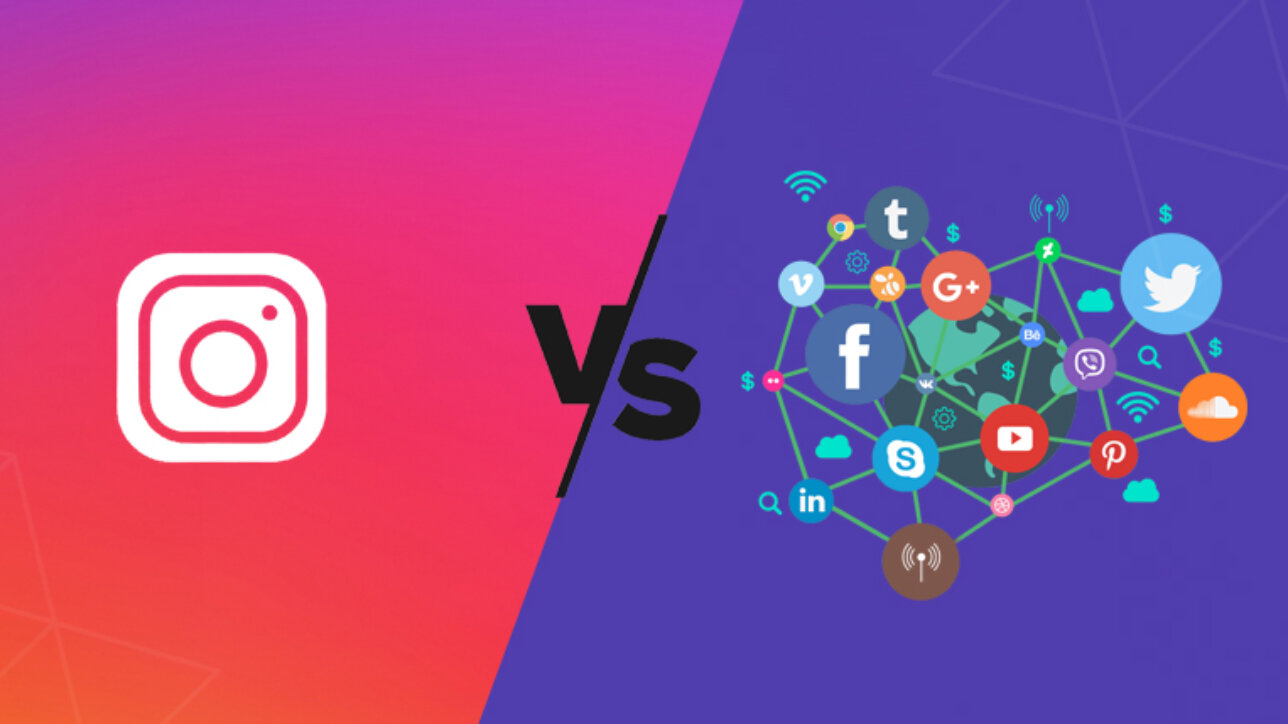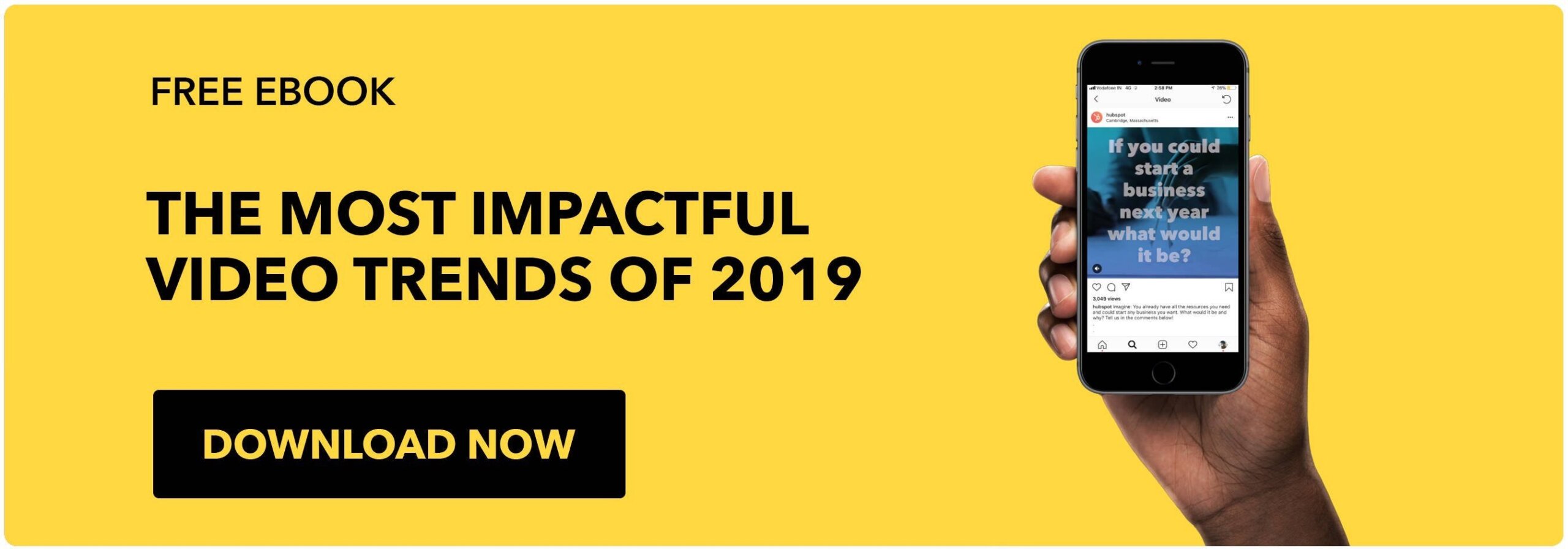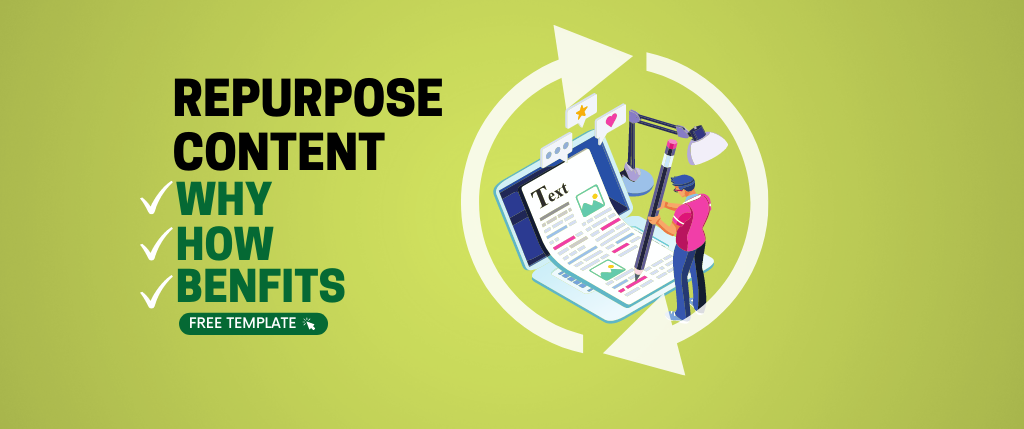Instagram’s popularity has grown ever since it first debuted in 2010. With more than 500 million users, it is currently the second most popular social media platform in the world, and marketers have fallen in love with this platform. Infact, the number of marketers has doubled over the past 6 months on Instagram.
As compared to all other social media platforms, Instagram has consistently proven itself to be a better choice. Once we compare instagram to other social media platform, we get a clear cut idea on how much to invest and promote our brand on each platform respectively.
Instagram v/s Pinterest
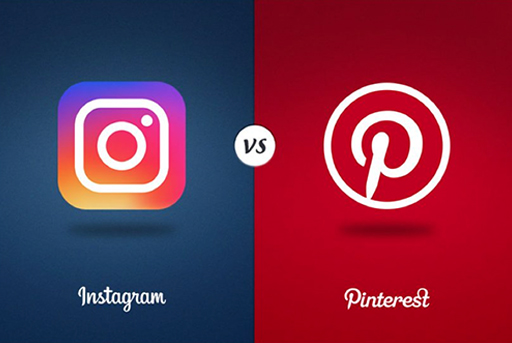
Source: https://dsim.in/blog/
Pinterest is a social network with photo-centric virtual pinboards, but lately it has added new video features that attract businesses and creators alike.
Newer shopping features like current pricing, links to retailers’ websites, pins for retailers’ entire catalogs, and automated product recommendations seem like a reflection of Instagram.
The question arises whether businesses should pay more attention to Pinterest than Instagram?
Before we dive into the comparison of statistics, let us first know what is Pinterest all about?
Though Facebook, Instagram, Twitter and Snapchat dominate the conversations on social networks, when it comes to product searches and shopping, Pinterest nails the leadership board. (Cowen and Co.)
This is mainly because Pinterest encourages its users to share photos of products rather than personal images or comments on latest news.
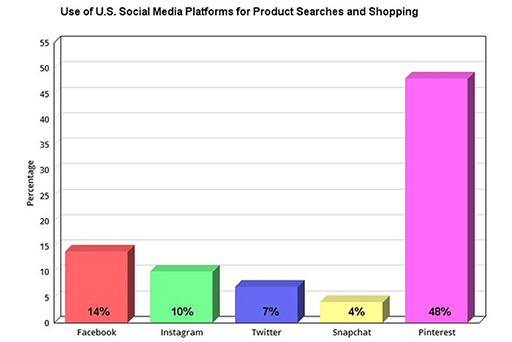
Pinterest also allows you to build boards based on personal lists like ‘designer dresses’, ‘dream wedding’ or even ‘aesthetic craft’. This makes it ideal for the retailers to launch their products.
That’s why Pinterest allows retailers to upload their entire catalog, and have added Pinterest-like feeds on their own homepages.
Here are some of the facts that you’ll find interesting about Pinterest:
- Pinterest has 291 million monthly active users.
- Pinterest added more US users in 2017-2018 than Facebook and Twitter combined.
- Pinterest drives 33% more traffic to shopping sites than Facebook.
- 50% of new Pinterest sign-ups in 2018 were men.
- 80% of new Pinterest sign-ups in 2017-2018 were from outside the US.
- 98% of Pinners try out the ideas they discover on the platform.
- Two-thirds of Pinterest pins represent brands and products.
- Advertising on Pinterest earns a $2 profit for every $1 spent.
Pinterest can be quite profitable if used well. It connects businesses and customers in a more meaningful manner.
Most of the times, people are using Pinterest for reference, while shopping in a brick-and-mortar store.
Here are some Instagram facts that will give you a clearer view of its place:
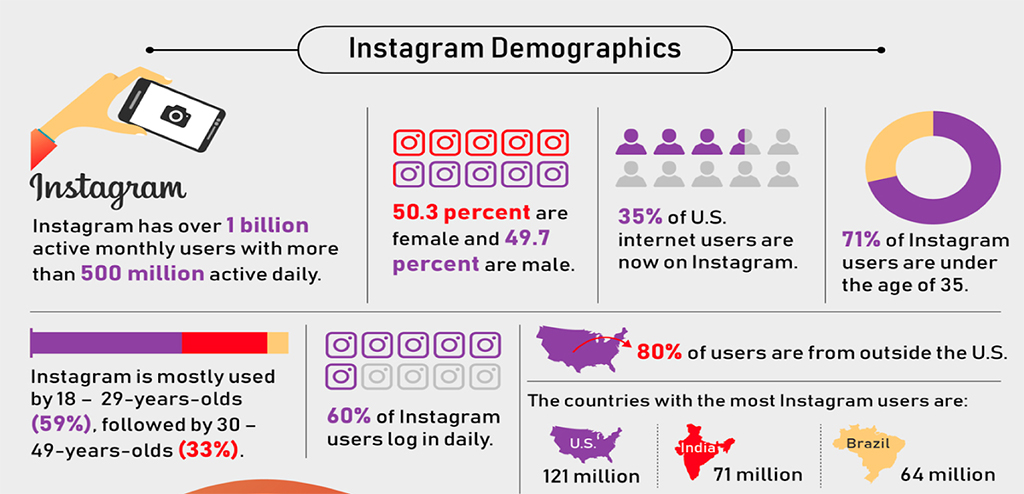
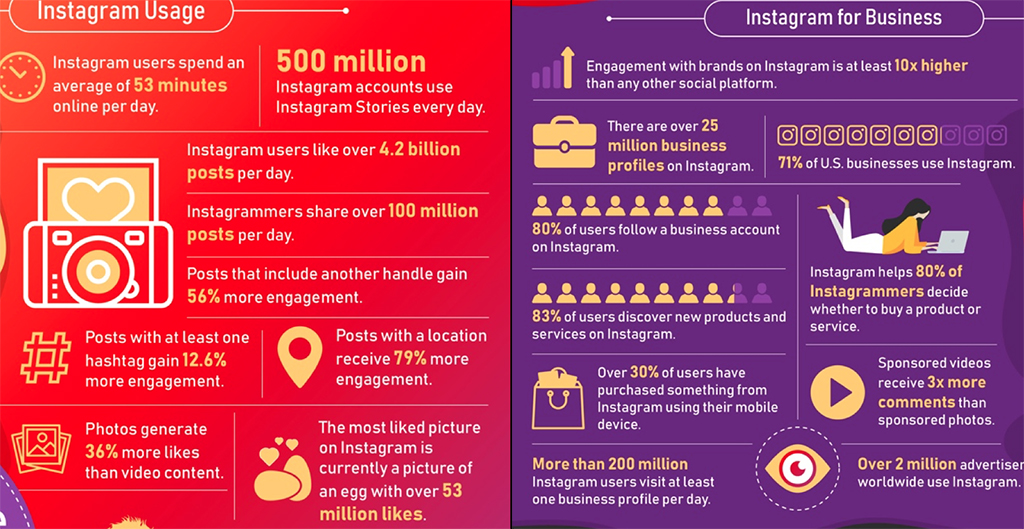
Source: https://famemass.com/instagram-statistics/
Different, yet they Overlap!
Instagram started off as a social media platform to share filtered photos, whereas Pinterest lets users pin their favorite photos of products to interest boards. But, both the networks evolve as ‘shopping platform’ as brands can post their products on Instagram or pin them on Pinterest. These ads are generating the main revenue.
In fact, Instagram avails the option of sharing shop-able post and in-app checkout feature, yet only 10% users use the app to find products whereas it is 46% on Pinterest. Ironic, isn’t it?
After studying the above statistics, it is observed that Pinterest could soon be a threat to Instagram!
But Instagram has it all planned!
- Instagram has a younger and wider crowd as compared to Pinterest.
- Instagram launched private ‘collections’ 2 years back, where you can save individual posts. This resembles to Pinterest’s feature, and this is how it aims to gain more product searches. Too add to it, TechCrunch also claims that Instagram might soon introduce public collections too that might be a clone of Pinterest’s pinboards.
- When it comes to social media influencers, there are around 78% of them on Instagram, whereas hardly 1% on Pinterest.
Thus, even though brands can promote themselves well on Pinterest, getting endorsements from accounts with thousands of followers might be a task!
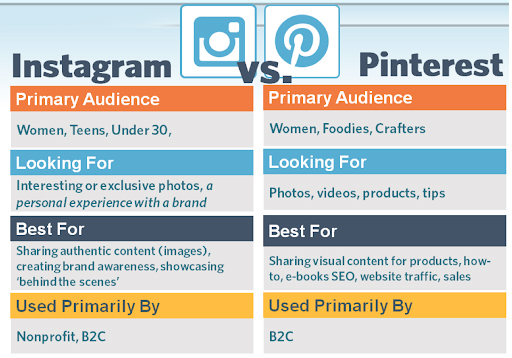
Source: https://blogs.constantcontact.com/difference-pinterest-and-instagram/
As a brand, if you are troubled to decide on which platform to invest more, worry not!
There is ample of place for both the platforms to flourish and individually they’re making immense updates and progress to have a flourishing market!
Instagram v/s Facebook
Instagram and Facebook, both are strong and popular platforms, that you could consider for advertising.
Let us see what each platform has to offer –
Earlier, we could view the posts in order, according to the time they were published; whereas now, the accounts that you actually like are pushed to be on the top, as compared to the posts from your weird schoolmate that you don’t wish to see.
- Reach:
Facebook is the leading platform with 2.2 billion active monthly users, whilst Instagram stands on the third position with 1 billion users, out of which 1 million are advertisers.
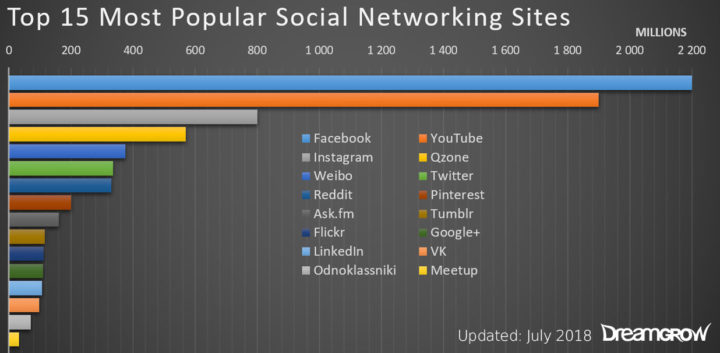
Source: https://www.dreamgrow.com/
2. Engagement:
According to Facebook’s new algorithms, a particular post is ranked on the basis of:
- No. of likes, comments, and shares on the post.
- Posts from family members are seen first.
- Posts that are likely to start a conversation are ranked higher.
- Visual posts over only-text.
- Posts trying to push people into buying a product/service are demoted. Also, Facebook checks text against known advertisements and demotes unofficial ads.
On the other hand, Instagram beats Facebook with the highest number of engaged users.
In a day, overall posts yield around 4.2 billion likes.
Although, recent news says that engagement has reduced on Instagram, it still stands above other social media.
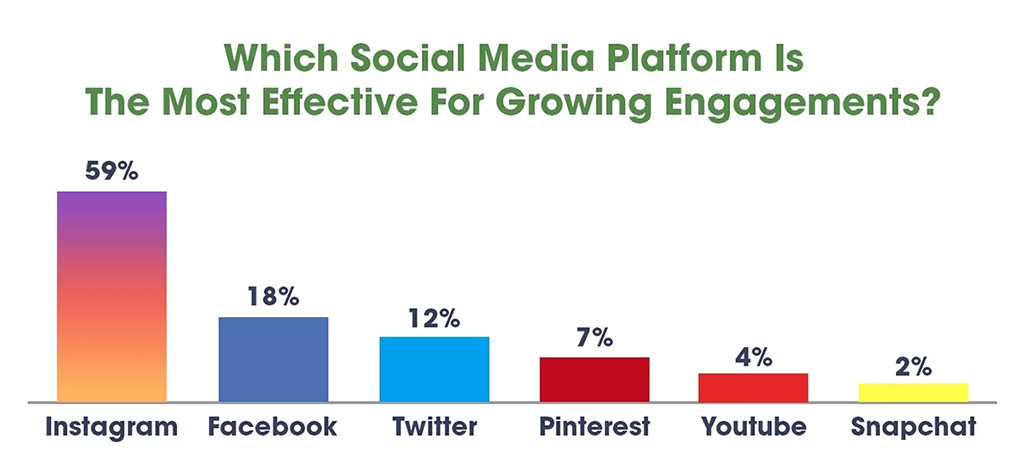
Source: https://www.viralnation.com/blog/
Posts on Instagram are based on:
- No. of hearts and comments on each post.
- How relevant is the post to the user.
- Posts from accounts that the user has previously interacted with and searched for are ranked higher.
- Time spent by the user on a post.
- Recent posts are ranked higher.
3. Audience Demographics:
It is always important to know your audience, as it helps to understand targeting better.
As we all know, Instagram is a “young” generation-centric platform, and has the main audience aging from 17-34 years (both men and women).
Whereas Facebook on the other hand is used mostly by middle-aged adults (25-34 years-mostly men)
4. Mobile-friendliness
I’m sure that all of us must have used Facebook and Instagram via phone as well as a desktop or laptop.
Facebook is easily operated via both, mobile phones and laptops. You can check activities and also use messenger with complete ease on all devices.
When it comes to Instagram, it is a mobile-first platform. . It is difficult to upload pictures, choose filters from the web version. In fact, web instagram does not allow you to view your DMs and instagram stories.
Instagram’s sole purpose is to share moments & experiences of your lives instantly. Therefore, they made the bet early on to be a mobile-first experience.
Thus, when you want to do some advertising and marketing on Facebook, it doesn’t matter what device you use and how you access the platform. Although, research shows that 95.1% of active user accounts access Facebook via smartphone, 31.8% via laptop and desktop, and only 8.8% via tablets. That means, if you want to launch your social media campaign on Facebook, you should optimize your content for mobile usage.
As far as Instagram is concerned, hardly anybody accesses the platform via laptops and PCs. Most access it either via smartphone or tablet. So, you have no other choice but to make all your posts and/or ads mobile-friendly.
5. Types of Ads:
Facebook offers 11 types of ads that you can choose from:
- Video Ads: recommended videos up to 15 seconds with subtitles.
- Image Ads: an attractive image accompanied by a persuasive message.
- Collection Ads: a cover image or video followed by a few product photos.
- Carousel Ads: you can showcase up to 10 images (or videos) in a single ad, each with its own link.
- Slideshow Ads: video-like ads, which use motion, sound and text to tell your story.
- Facebook Instant Experiences/Canvas Ads: mobile-optimized ads that show all your videos, photos, carousels and product images in a single ad.
- Lead Generation Ads: capture user’s information.
- Offer Ads: allow you to create and extend timely discounts and promotions to your target audience.
- Post Engagement Ads/Boosted Posts: help you share information about your business with users.
- Event Response Ads: help you to promote events.
- Page Likes: can be used to drive your audience to Like your Facebook Page.
Although there is a variety of ads to choose from, engagement on Facebook remains low as compared to Instagram.
In spite of having greater engagement, Instagram offers only 4 types of ads:
- Photo Ads: allow you to showcase your products through images.
- Video Ads: can be up to 60 seconds.
- Carousel Ads: users can swipe through up to 10 images or videos, each with a CTA button that connects them to your website.
- Stories Ads: full-screen ads in which you can share photos and videos with your audience.
6. Costs:
Let’s be honest, every social media campaign is expensive, no matter what platform it is in.
Here are a few tips on how to effectively make use of the campaigns at the same time not go bankrupt:
- Spend your money on those ads that best fit your strategy (don’t invest in all of them).
- Make sure each and every ad you create has a purpose (don’t give too much for free).
- Treat social media advertising as an investment, not a cost, and expect a return.
- Target the right audience and narrow it down.
- Remember, just like every compelling blog post of yours should be accompanied by a link to your site in your author bio, and a CTA, so should your ads. It’ll increase your traffic and sales.
- Make good use of the hashtags (link to Saloni’s blog).
- Invest in quality, not quantity. Awe your audience with videos, images and pictures of products.
Also if possible, hire a professional who has thorough knowledge in the field and guides you through it.
Which platform is more suitable for marketing?
The answer to this question depends on what you’re looking for. Benefits of Facebook and Instagram are highly subjective. Before you make your decision, here are a few practices you can adopt:
1. Don’t abandon Facebook completely.
With Facebook’s great reach and visibility, it is a great platform for marketers. Not only does it have a large base, there is also acceptance among various groups of all ages. This is especially beneficial when you want to advertise for a large age group, and not a specific one.
Unlike Instagram where you can share only one link on the feed, and none in the caption, Facebook allows you to share unlimited links to your blogs, product pages, etc. This is a plus point if you wish to share informational posts and promote your blogs or purchase links.
2. Use instagram for better engagement and younger audience.
As earlier said, Instagram outperforms Facebook when it comes to engagement, and it is more appealing to a “younger” audience. So if your product satisfies both the above needs, you know where to invest heavily!
Instagram v/s Snapchat
Instagram and Snapchat fall in a similar category with a ton of overlapping features. Instagram has around 500 million daily users, whereas Snapchat has only 191 million users. In India, there are around 71 million monthly active users on Instagram, while only 10.95% of the over all users on Snapchat. Both are competing for victory, or at least the chance to be the go-to platform for your marketing plan.
To make the blurry line between the two platforms clearer, here are few differences to know them better!
- Stories
Almost 3 years ago, Instagram introduced Snapchat’s one of the key features to its own platform- Stories.
At first, it did not receive much response, as people were habituated to use Snapchat, but later the statistics bars rose higher, leaving Snapchat behind.
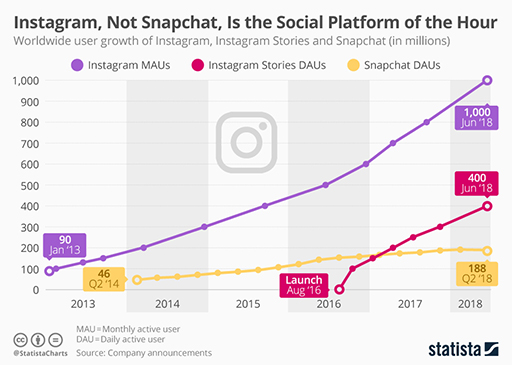
Instagram stories is more convenient and reaches higher visibility as it is the first thing a person sees after opening the app. In addition to this advantage, instagram also has a more exciting stickers, polls, “ask me a question”, and many such quiz options.
Snapchat on the other hand, has less attention when it comes to brands and is dominated by an even younger audience than instagram. This makes it easier for marketers to reach their audience.
E.g.- Bumble is making the most out of its marketing on Snapchat.
The down-side of Snapchat stories is that even though a sponsored ad is sent personally to someone on chat, it disappears after 24 hours; whereas on instagram, marketers can add that story to their highlights and it can be viewed any time after 24 hours too!
2. Ease of use
Instagram has the same layout since years, with minute changes here and there. This makes the user feel comfortable and adapt to small changes slowly and easily. On the contrary, Snapchat has changed its layout numerous times, that confuses the users and creates a feeling of distress.
Also, with instagram it is easy to locate or find a brand, with Snapchat none of this is possible!
3. Discoverability
On Instagram, when posts and stories from the followings are viewed, the “explore” option makes the users spend more time on the app.
On Snapchat, there is very little opportunity for the same. The closest thing you’ll find is the “For You” section, which contains content from celebrities and companies like Now This and ESPN. That doesn’t mean you can’t or shouldn’t advertise on Snapchat.
Snapchat offers your business the unique opportunity to create geofilters that are location specific—meaning you can create a custom Snapchat filter people can use when they’re at an event you sponsor, or in other situations where someone might be inspired to send a snap from your locale.
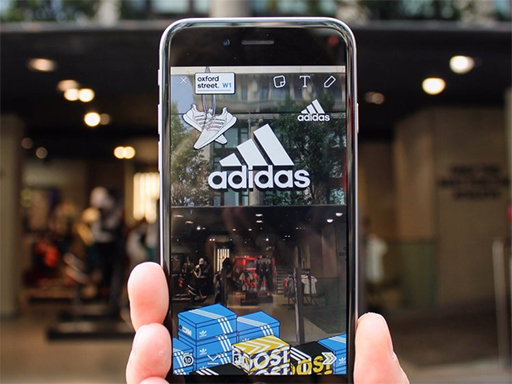
You can also sponsor lenses, which allow users to modify their own images by changing their eyes, mouth, or hair for example.
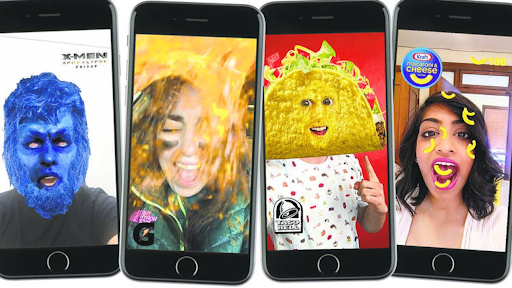
Source: https://medium.com
This feature comes at a hefty cost, however, and is likely to appeal more to the larger brands.
Instagram v/s Twitter
Twitter was one of the most dominant platforms for all marketers, until recent years with Instagram coming into play. Although Twitter is popular, it isn’t dominant like before.
Twitter has an overall of 250 million users worldwide, and Instagram, a billion!
- Engagement
Although Instagram has more users as compared to Twitter, the total number of Tweets (500 million a day) is greater than the number posts uploaded on Instagram. (95 million a day).
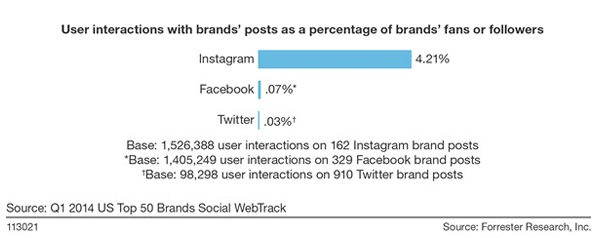
Re-tweeting (reposting) is another advantage that Instagram does not have. Though now with the “repost app”, you can reshare content to your personal feed. The native re-tweet is more easier and faster than opening up a 3rd party app to repost.
2. Audience
When it comes to audience demographics, similarities can be observed on both the platforms!
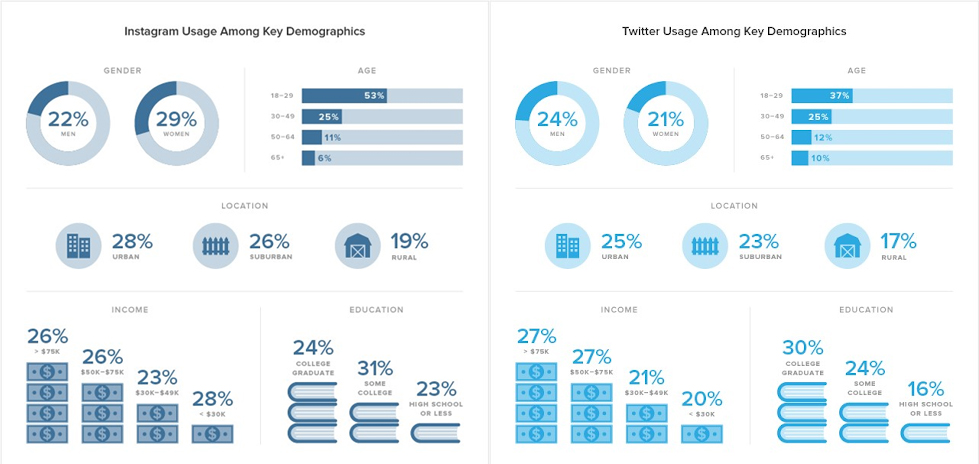
Sources: https://sproutsocial.com/insights/twitter-vs-instagram/
3. Advertising
There are tons of advertising options when it comes to Instagram and Twitter. On Instagram, you can monetize posts, stories, and IGTV videos, while on Twitter, you can only use posts in different formats to promote your products or services.
Instagram now offers direct shopping features that brands use to link to their products and online stores. Twitter does not offer a “Shop Now” feature, aside from sponsored tweets that link to product websites.
4. Functionality
Compared to Twitter, Instagram keeps you within the app. Its value comes from inside the app and highlights the contents that users share.
In a nutshell, Twitter is excellent for content distribution.
Twitter offers customer interaction for your business. After all, this social network is all about conversations which is the reason why a lot of brands prefer it for customer services. Consumers love using Twitter for feedback and support, and people are not afraid to voice out their opinions of companies in their Twitter accounts, good or bad.
On the other hand, on Instagram companies do not actively monitor their accounts on Instagram as they do on Twitter. In fact, most businesses use Twitter for support. You can directly interact with customers here. It’s also one of the reasons why Twitter is one of the top social media platforms today.
Conclusion:
Even though Instagram and Twitter have a similar audience and demographic, they have entirely different uses in your social media marketing strategy. Instagram is a site to publish original content and build your brand awareness. Twitter is an excellent tool to curate and share content, as well as engage and interact with your target audience.
Which is the Ultimate Platform?
There is no “right” platform, that you can choose as the sole medium for marketing, yet from the above discussion it can be proven that Instagram is an essential platform. You have to weigh the pros and cons, depending on the kind of personality your business has, where is the audience located and choose the platform that best suits your requirements.
